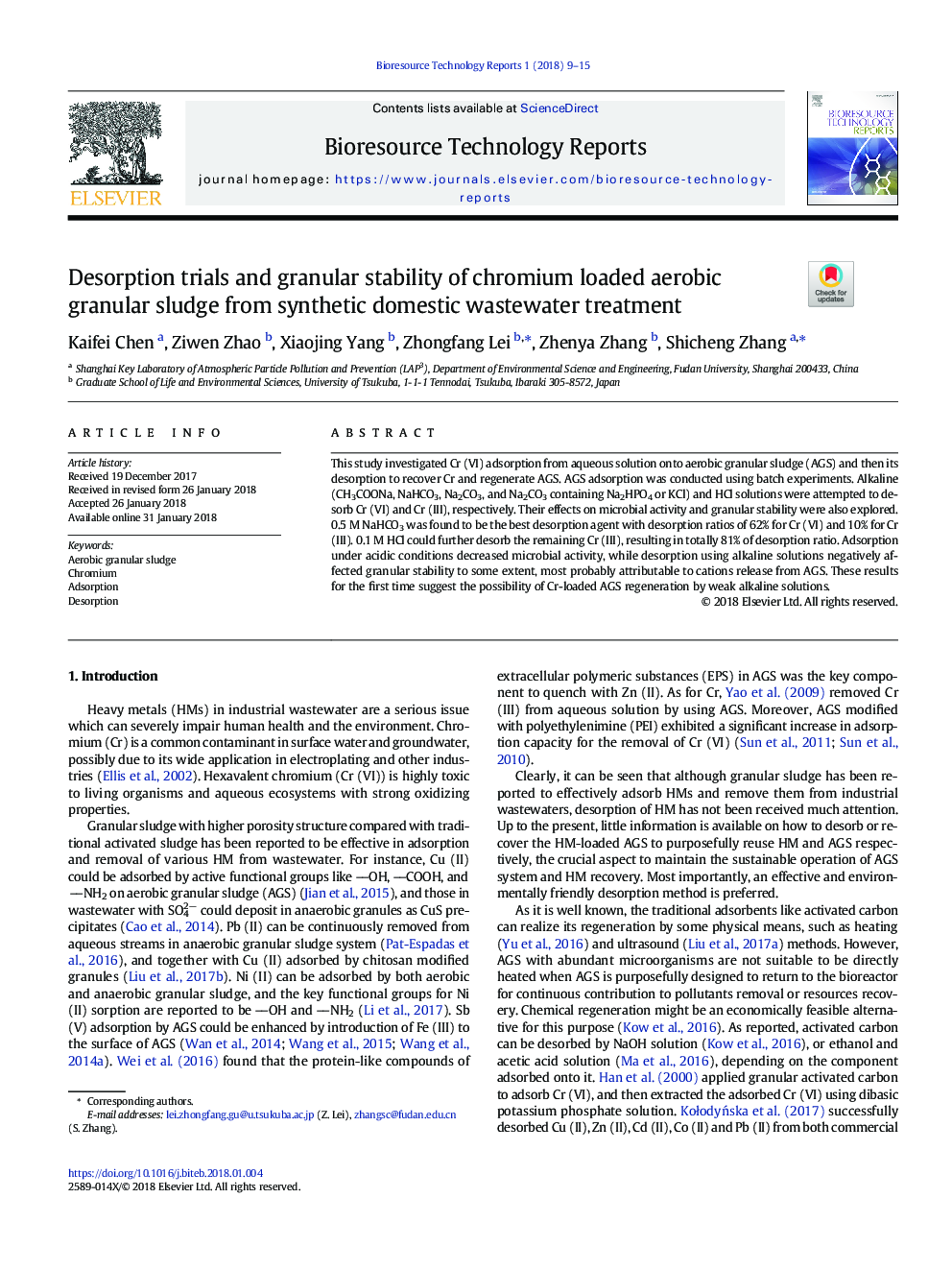| Article ID | Journal | Published Year | Pages | File Type |
|---|---|---|---|---|
| 6482560 | Bioresource Technology Reports | 2018 | 7 Pages |
Abstract
This study investigated Cr (VI) adsorption from aqueous solution onto aerobic granular sludge (AGS) and then its desorption to recover Cr and regenerate AGS. AGS adsorption was conducted using batch experiments. Alkaline (CH3COONa, NaHCO3, Na2CO3, and Na2CO3 containing Na2HPO4 or KCl) and HCl solutions were attempted to desorb Cr (VI) and Cr (III), respectively. Their effects on microbial activity and granular stability were also explored. 0.5Â M NaHCO3 was found to be the best desorption agent with desorption ratios of 62% for Cr (VI) and 10% for Cr (III). 0.1Â M HCl could further desorb the remaining Cr (III), resulting in totally 81% of desorption ratio. Adsorption under acidic conditions decreased microbial activity, while desorption using alkaline solutions negatively affected granular stability to some extent, most probably attributable to cations release from AGS. These results for the first time suggest the possibility of Cr-loaded AGS regeneration by weak alkaline solutions.
Related Topics
Physical Sciences and Engineering
Chemical Engineering
Bioengineering
Authors
Kaifei Chen, Ziwen Zhao, Xiaojing Yang, Zhongfang Lei, Zhenya Zhang, Shicheng Zhang,
